Chicago – Illinois Water Quality at a Glance
significant concerns
Is Chicago Water Safe to Drink?
Generally Yes, With Caution – Chicago’s water meets federal standards and shows no detectable PFAS, but faces serious lead contamination with 70% of homes having lead pipes. Additional concerns include chromium-6 (some of highest levels nationally) and disinfection byproducts. Nearly 70% of children under 6 may be exposed to lead-contaminated tap water.
⚠️ Key Concerns for Chicago Residents
- Lead Contamination: About 70% of service lines are lead; 70% of children under 6 potentially exposed
- Infrastructure Legacy: Lead pipes were required by city code until banned in 1986; 400,000 lead service lines remain
- Chromium-6: Cancer-causing hexavalent chromium from industrial sources like U.S. Steel
- Disinfection Byproducts: 9 of 13 contaminants exceeding health guidelines are from water treatment process
Read the full report below for detailed analysis, city-specific data, and actionable recommendations for Chicago residents.
Chicago – Illinois – Water Quality Report 2025: PFAS Testing, Lead Infrastructure Crisis & Safety across your city
Chicago manages one of America’s largest municipal water systems, serving approximately 5.3 million people across the city and 125 surrounding suburbs. The Chicago Department of Water Management (CDWM) delivers nearly one billion gallons of water daily through a vast network of purification plants, pumping stations, and more than 4,400 miles of water mains.
Drawing from Lake Michigan, a freshwater source containing roughly 1.3 quadrillion gallons of water, Chicago’s water undergoes rigorous treatment at either the Jardine Water Purification Plant (the world’s largest) or the South Water Purification Plant. The city’s water infrastructure includes a unique engineering feat – a series of tunnels and reservoirs deep below the city that help manage stormwater and prevent sewage overflows into Lake Michigan.
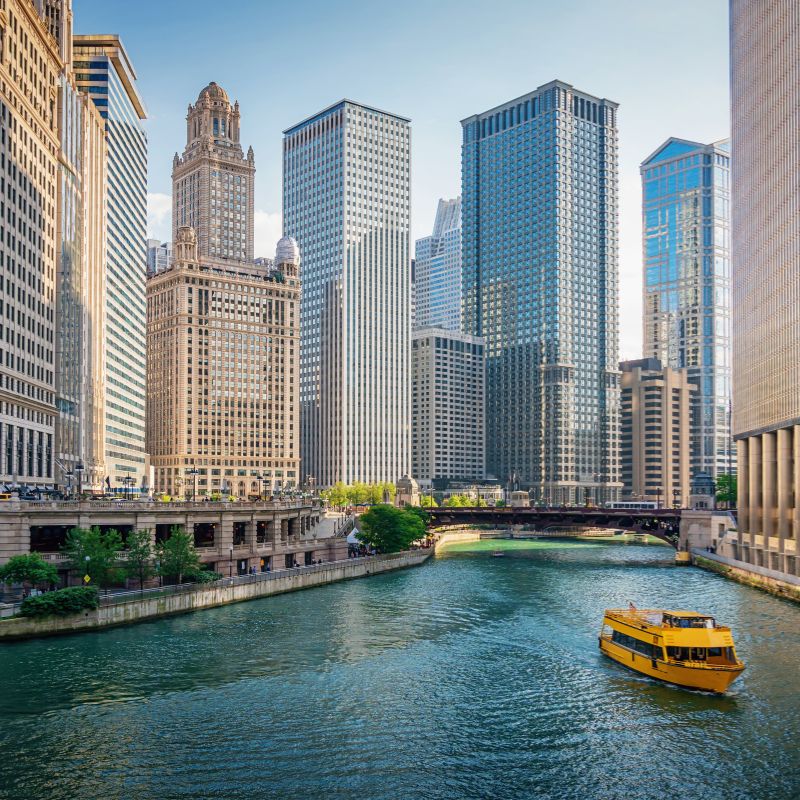
Chicago Water Quality: Current Status (2024-2025)
Latest Testing Results
- Lead Levels: The most recent testing period (2023) showed 90th percentile lead levels of 9.1 parts per billion (ppb), below the EPA action level of 15 ppb but concerning given that nearly 70% of Chicago children under 6 are potentially exposed to lead-contaminated tap water.
- PFAS Status: Chicago shows excellent results with non-detectable levels of PFAS across multiple studies conducted by the US EPA, Illinois EPA, and City of Chicago in 2014, 2020, and 2024.
- Testing Scope: The city conducts over 600,000 analyses per year on water samples collected throughout the distribution system, including residential tap water in homes with and without lead service lines.
- Compliance Status: Chicago’s water meets all EPA standards for regulated contaminants. The city’s extensive monitoring program tests for over 200 substances, including microbes, metals, chemicals, and radionuclides.
Lead Service Line Crisis
- Scope of the Crisis: Chicago has approximately 400,000 lead service lines connecting homes to water mains – more than any other U.S. city. These lines were mandated by city plumbing code until the federal ban in 1986, creating one of the most significant lead infrastructure challenges in America.
- Health Impact: A March 2024 Johns Hopkins study estimated that 68% of children younger than 6 years old in Chicago are exposed to lead-contaminated drinking water, with about 70% of homes citywide having lead service lines.
- Federal Timeline: Under new EPA regulations finalized in October 2024, Chicago must replace all lead service lines within 20 years (by 2044), compared to the 10-year timeline for most other cities due to Chicago’s massive scope.
- Current Progress: As of early 2025, approximately 8,000 lead service lines have been replaced. The program’s pace has increased with additional federal infrastructure funding, with plans to replace over 30,000 lines by 2028.
Water Source and Treatment
- Lake Michigan Water Quality: Lake Michigan provides the source water, though the Illinois EPA has assessed all 64 miles of Lake Michigan shoreline as “not supporting primary contact and fish consumption” due to high levels of E.Coli, polychlorinated biphenyls (PCBs), and mercury.
- Treatment Process: Chicago’s water treatment includes coagulation, flocculation, sedimentation, filtration, and disinfection. The city has used chlorine as its primary disinfectant since 1912.
- Corrosion Control: Chicago adds orthophosphate to its water to create a protective coating inside pipes, reducing lead leaching. The dosage was optimized in 2023 based on comprehensive pipe loop studies.
Infrastructure Investments
- Water Main Replacement: Chicago is replacing approximately 30 miles of water mains annually, focusing on pipes installed before 1950 that have the highest break rates.
- Facilities Modernization: The Jardine Water Purification Plant is undergoing a $600 million modernization project to enhance treatment processes and improve energy efficiency, scheduled for completion in 2027.
- Smart Meters: The city has installed over 500,000 smart water meters to help detect leaks early and improve conservation efforts.
Emerging Contaminant Monitoring
Chicago actively monitors for emerging contaminants including microplastics, PFAS, pharmaceuticals, and personal care products. For PFAS specifically, Chicago shows excellent results with non-detectable levels, though the city continues monitoring as part of federal requirements. However, significant concerns remain with chromium-6 contamination from industrial sources like U.S. Steel, which has historically dumped hexavalent chromium into Lake Michigan tributaries.
Recommendations for Chicago Residents
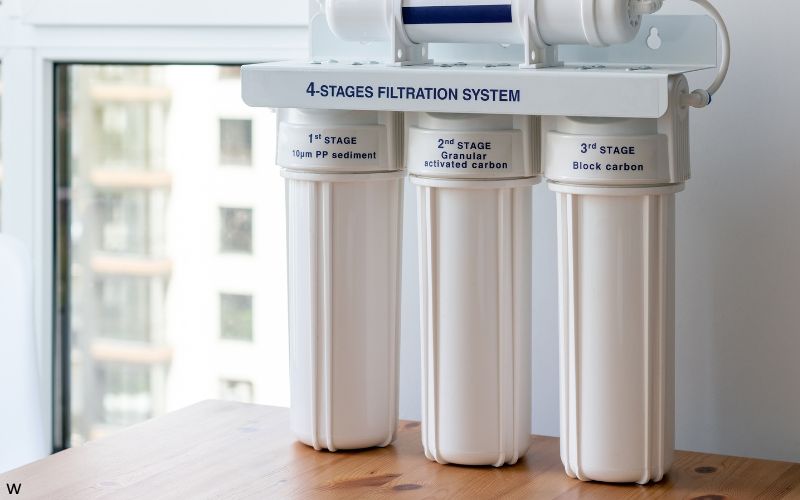
Use Filtered Water
If your home has lead service lines or was built before 1987, use NSF-certified filters for drinking and cooking water. Look for filters certified to remove lead (Standard 53), chromium-6, and disinfection byproducts, and ensure they’re properly maintained.
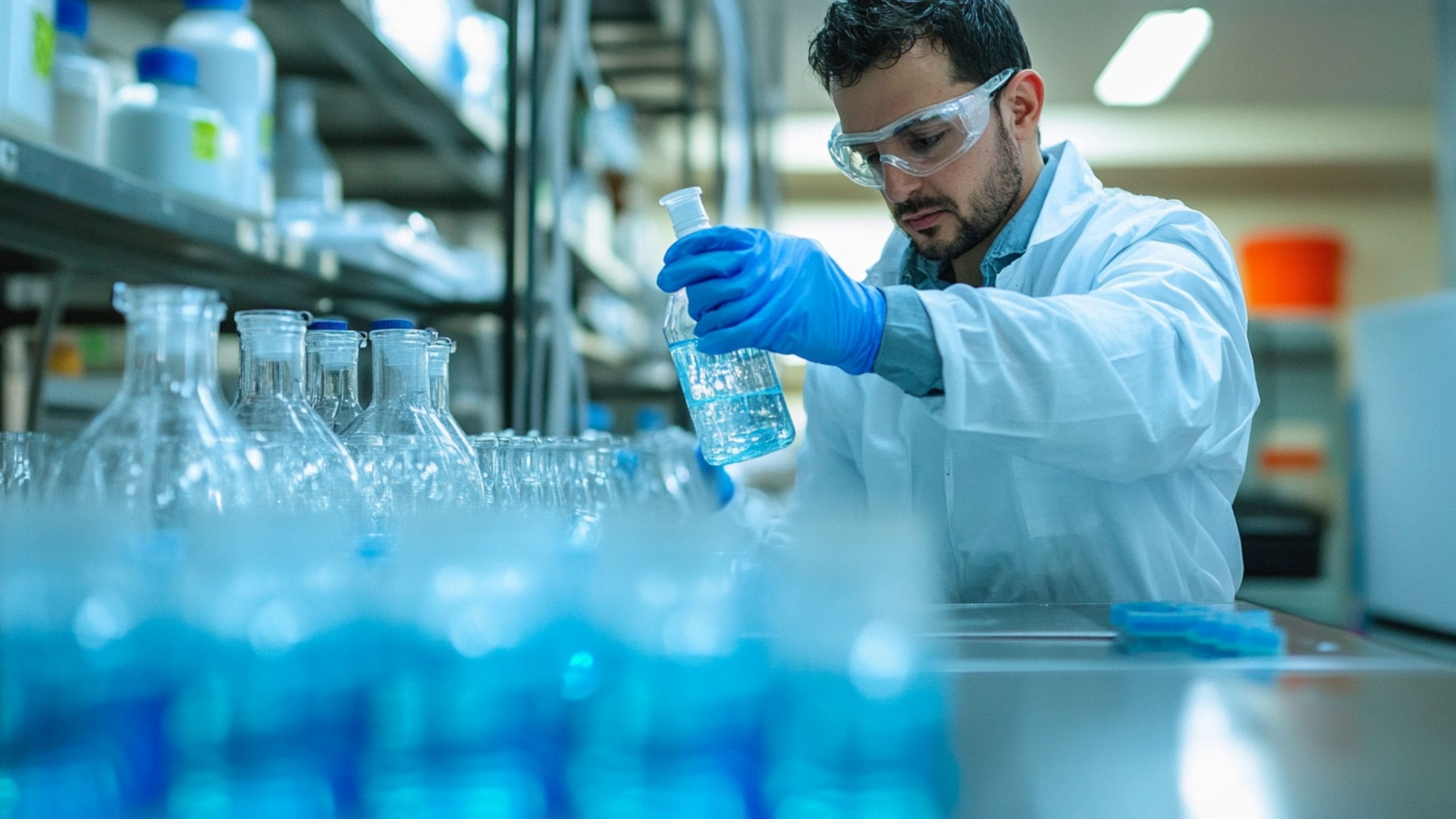
Test Your Water
Chicago residents can request free water quality testing by calling 311 or visiting www.chicago.gov/waterlead to schedule testing. Testing is particularly critical for homes with children or pregnant women due to the widespread lead contamination risk.
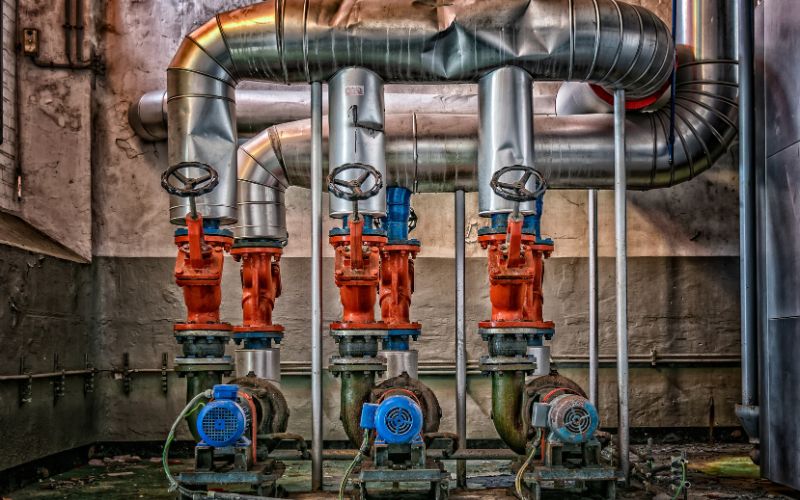
Check Your Service Line
Determine if your home has a lead service line using Chicago’s online lookup tool at www.chicago.gov/leadcheck. Eligible homeowners can apply for the city’s lead service line replacement program. With 70% of Chicago homes having lead pipes, this is a critical safety check.

Flush Your Pipes
After water hasn’t been used for 6 hours or more, run cold water for 3-5 minutes to flush stagnant water. Always use cold water for drinking and cooking, as hot water may contain higher levels of lead. This is especially critical given Chicago’s extensive lead pipe infrastructure.

Stay Informed
Review Chicago’s annual Consumer Confidence Report for detailed water quality information. Sign up for water quality alerts at www.chicago.gov/wateralerts to receive notifications about testing results or potential issues, especially related to lead service line work in your area.
Quality News About Your Water
Get the comprehensive water quality news coverage you need with our dedicated US Water News Service. From coast to coast, we deliver in-depth reporting and expert analysis on PFAS contamination, EPA regulatory changes, infrastructure developments, and emerging water safety issues affecting communities nationwide. While mainstream media only covers the biggest stories, we provide the detailed, ongoing coverage that helps you understand the full scope of America’s water challenges. Whether you’re a concerned citizen, water professional, or community leader, our daily updates and analytical insights keep you informed about the issues that matter most to public health and environmental safety.
Frequently Asked Questions
How do I know if my home has a lead service line?
Chicago homes built before 1987 likely have lead service lines due to past city requirements. With 70% of Chicago homes having lead pipes, this affects the majority of the city. To check your specific home:
1. Look at the water service line entering your home (usually in the basement near the water meter). Lead pipes are dull gray, won’t attract a magnet, and scratch easily with a key, revealing a silver color.
2. Use Chicago’s online lookup tool at www.chicago.gov/leadcheck to see if your address is in the database.
3. Call 311 to request a free evaluation from the Department of Water Management.
Is Chicago’s water safe to drink despite the lead crisis?
Chicago’s water meets all federal and state drinking water standards and is treated with orthophosphate to minimize lead leaching from pipes. However, with nearly 70% of children under 6 potentially exposed to lead-contaminated tap water and 400,000 lead service lines citywide, the risk is significant.
As a strong precaution, especially for households with children, pregnant women, or immunocompromised individuals, the Chicago Department of Public Health recommends using NSF-certified water filters for drinking and cooking if you have lead service lines. Always run water for 3-5 minutes after long periods of non-use before collecting water for consumption.
How can I participate in Chicago’s lead service line replacement program?
Chicago offers several programs to help residents replace lead service lines, made more urgent by the new federal requirement to replace all 400,000 lead lines by 2044:
1. Equity Lead Service Line Replacement Program: Free replacements for low-income households in prioritized areas. Eligibility is based on income (at or below 80% of area median income).
2. Homeowner-Initiated Program: The city waives up to $3,100 in permit fees and tap costs when homeowners hire a licensed plumber to replace their lead service line.
3. MeterSave Program: Free lead service line replacement when you volunteer to have a water meter installed.
Visit www.chicago.gov/leadpipes or call 311 to apply for these programs.
What types of water filters are effective for Chicago’s contaminants?
For Chicago’s specific concerns (lead, chromium-6, disinfection byproducts), look for filters certified to multiple NSF standards. Effective filter types include:
1. Pitcher filters: Affordable and easy to use, but require regular filter replacement (typically every 2-3 months). Look for NSF/ANSI Standard 53 for lead reduction.
2. Faucet-mounted filters: Attach directly to your faucet and allow you to switch between filtered and unfiltered water. Filter cartridges typically last 2-3 months.
3. Under-sink or reverse osmosis systems: More expensive but most effective for removing multiple contaminants including lead, chromium-6, and disinfection byproducts.
Ensure whatever filter you choose explicitly states it removes lead, chromium-6, and chlorination byproducts. Always follow the manufacturer’s instructions for replacement schedules.
Contaminants of Concern
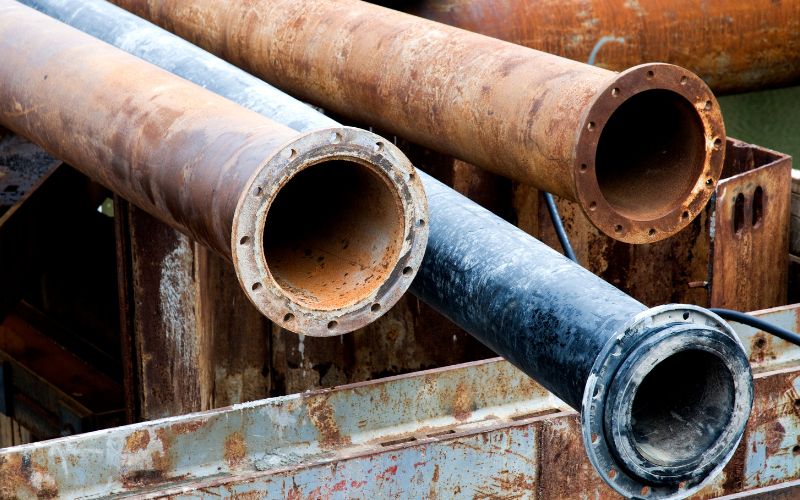
Lead
Source: Primarily from Chicago’s 400,000 lead service lines connecting homes to water mains, also from lead solder and fixtures in older homes built before 1987
Health Effects: Developmental delays in children, learning difficulties, reduced IQ, kidney damage, reproductive issues, and cardiovascular effects in adults
Current Crisis Level: 90th percentile value of 9.1 ppb; 70% of children under 6 potentially exposed EPA Limit: Action level 15 ppb, but no level of lead is considered safe
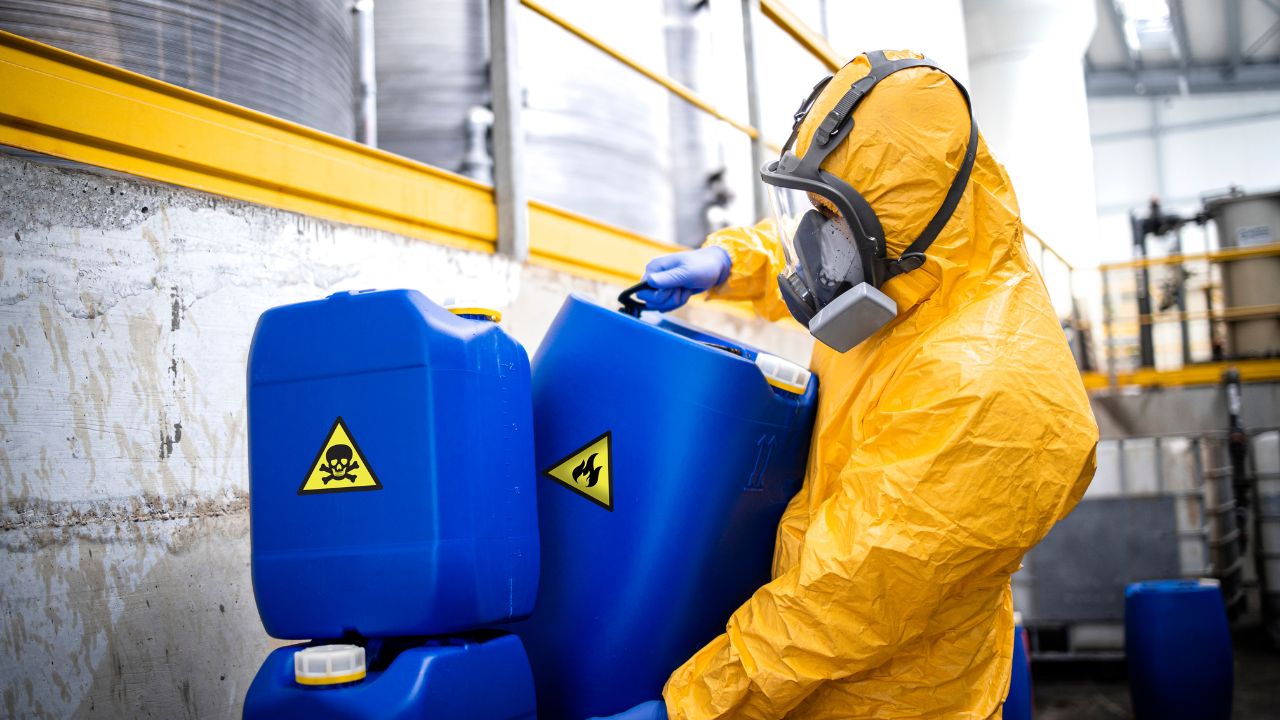
Disinfection Byproducts
Source: Form when chlorine used for disinfection reacts with naturally occurring organic matter in water
Health Effects: Potential increased risk of bladder cancer and reproductive effects with long-term exposure to elevated levels
Current Status: Nine of the 13 contaminants exceeding health guidelines in Chicago are disinfection byproducts; levels vary seasonally and are higher in summer months
Please read – our information
The information presented on cleanairandwater.net is compiled from official water quality reports, trusted news sources, government websites, and public health resources. While we strive for accuracy and thoroughness in our presentations, we are not scientists, engineers, or qualified water quality professionals.
Our mission is to present water quality information in an accessible, real-world format that helps people understand what’s in their water and make informed decisions about their health and safety. We believe that complex environmental information should be available to everyone in a format that’s easy to understand.
We make every effort to ensure our content is current and accurate, but we cannot guarantee that all information is complete or error-free. This website should not replace official communications from your local water utility or health department. We always recommend consulting official sources for the most up-to-date information regarding your specific water system.
Clean Air and Water is not liable for any unintentional errors, omissions, or outdated information. The content on this site is provided for informational purposes only and should not be considered professional advice.


